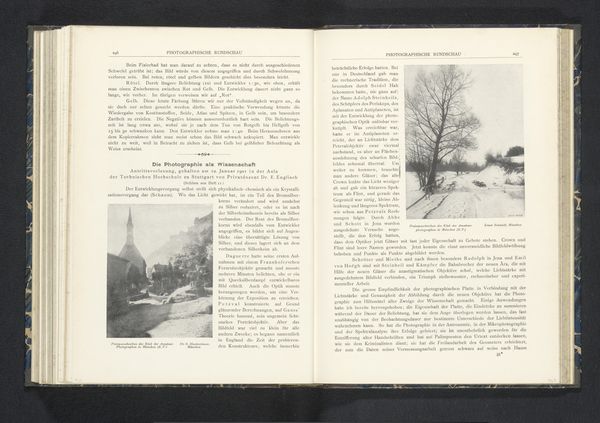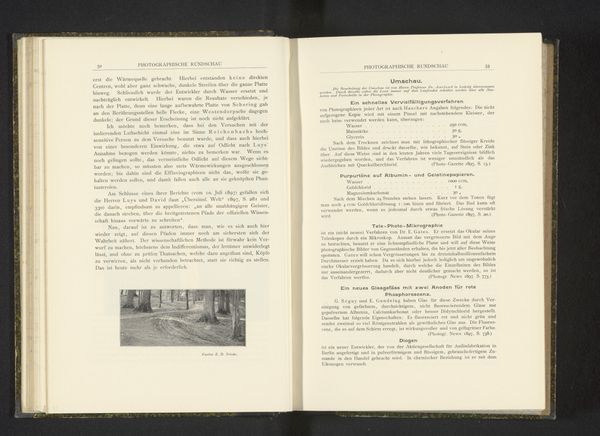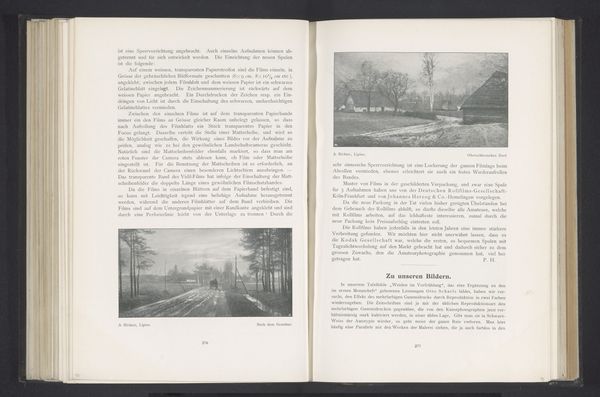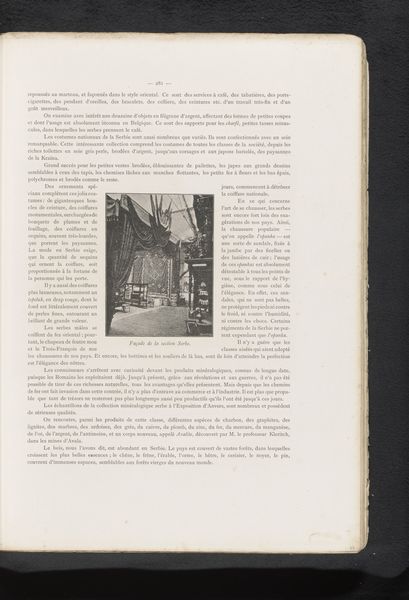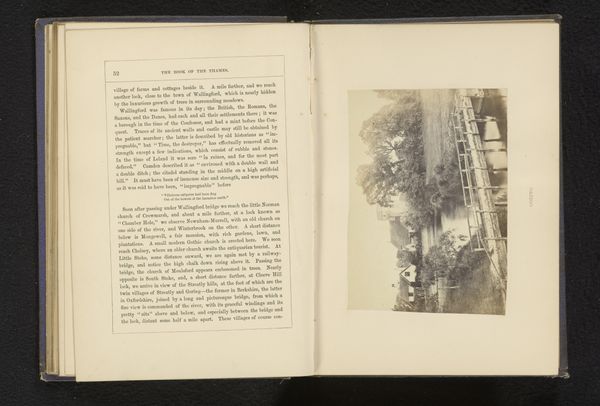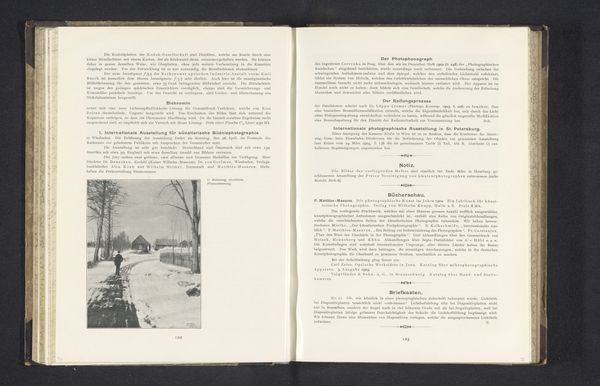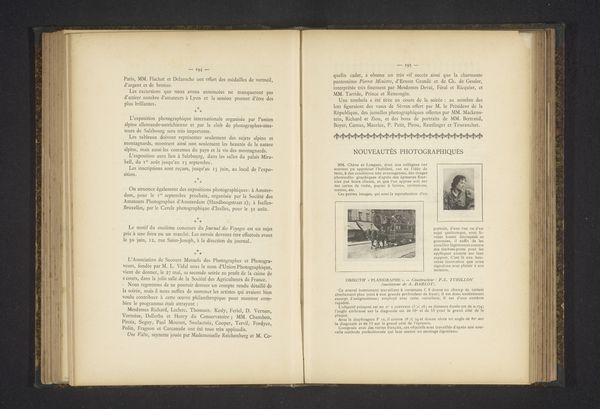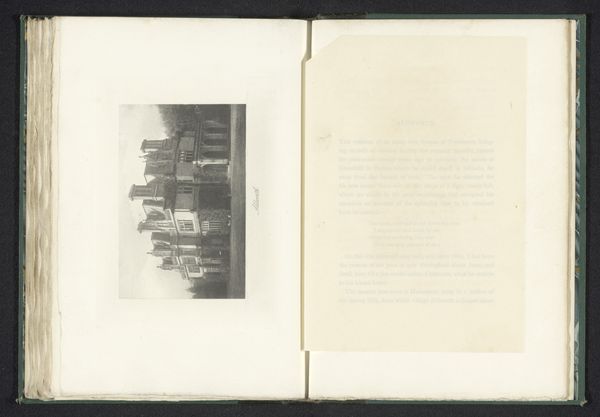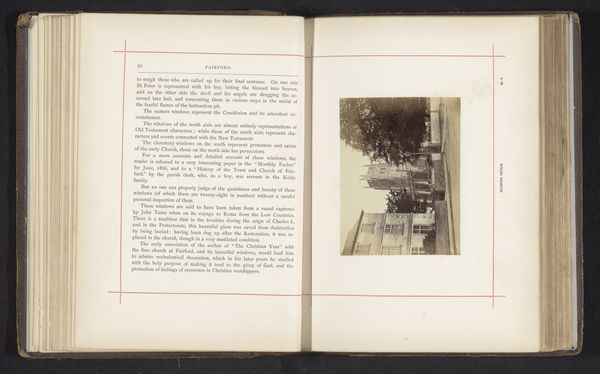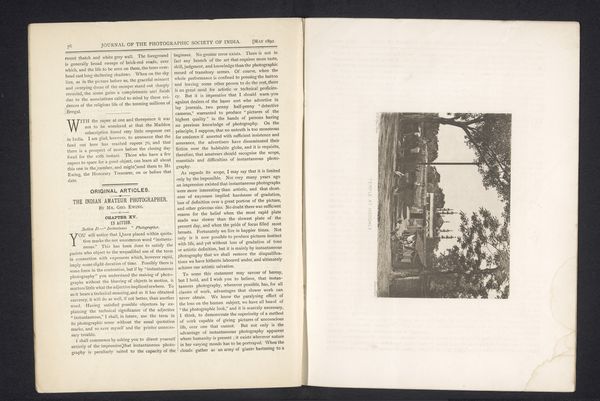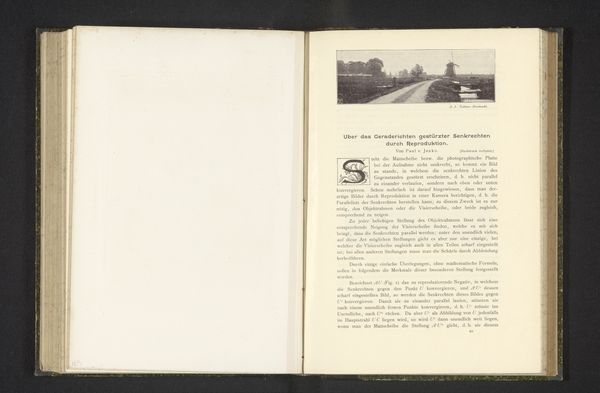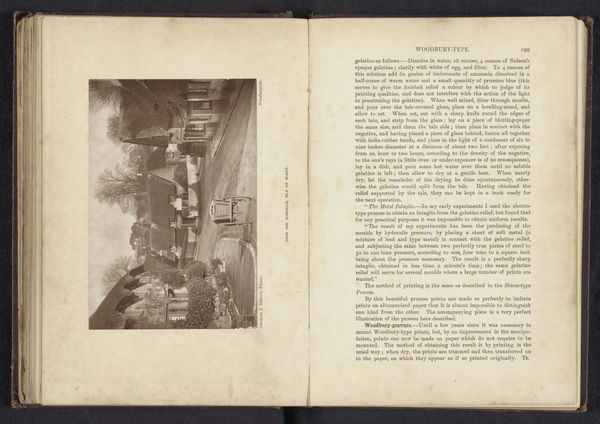
print, photography, gelatin-silver-print
#
tree
#
still-life-photography
# print
#
book
#
landscape
#
photography
#
road
#
journal
#
gelatin-silver-print
#
realism
Dimensions: height 147 mm, width 198 mm
Copyright: Rijks Museum: Open Domain
Editor: Here we have a gelatin silver print from before 1903, by H. Vonachten, called "Bosweg met bomen aan weerszijden," or "Forest Path with Trees on Both Sides." It’s a very serene landscape. The eye is drawn down the road, deeper into the picture. What do you see in this piece? Curator: Well, seeing it presented within a book, already suggests something about its initial audience and use, doesn't it? This wasn’t meant for a gallery wall, but perhaps to illustrate a text or provide examples for photographers. How might this context have shaped the photographer's choices? Was their priority artistic expression or serving a practical purpose? Editor: I hadn’t thought about it like that. It definitely shifts my perspective. Knowing it was likely meant for other photographers, I wonder if it’s meant to be instructional, showcasing technique rather than personal vision. Curator: Precisely. And what does it say about the value placed on photography at the time, if images of landscapes like this were considered valuable for inclusion in printed material? Consider how the development of printing technology influenced the spread and appreciation of photography as an art form and as a tool. Was photography at this point trying to prove itself as high art? Editor: So, its existence in a book indicates a certain level of acceptance, or at least utility. The image itself feels rather traditional in composition for the time. Curator: Exactly. Do you find any tension between the potentially radical new medium of photography, and the established genre of landscape art it's referencing? Also consider, who had access to photography books like this? Editor: Good point! I think there’s definitely something to be said about the democratization of art, maybe with limitations because of cost and access. It offers a new perspective on a familiar subject. Thanks, I hadn’t really considered that! Curator: Of course! Thinking about the socio-cultural function of an artwork really changes how we perceive it, doesn’t it?
Comments
No comments
Be the first to comment and join the conversation on the ultimate creative platform.
